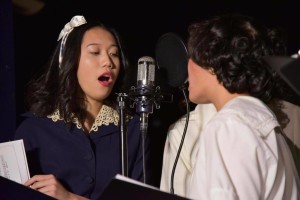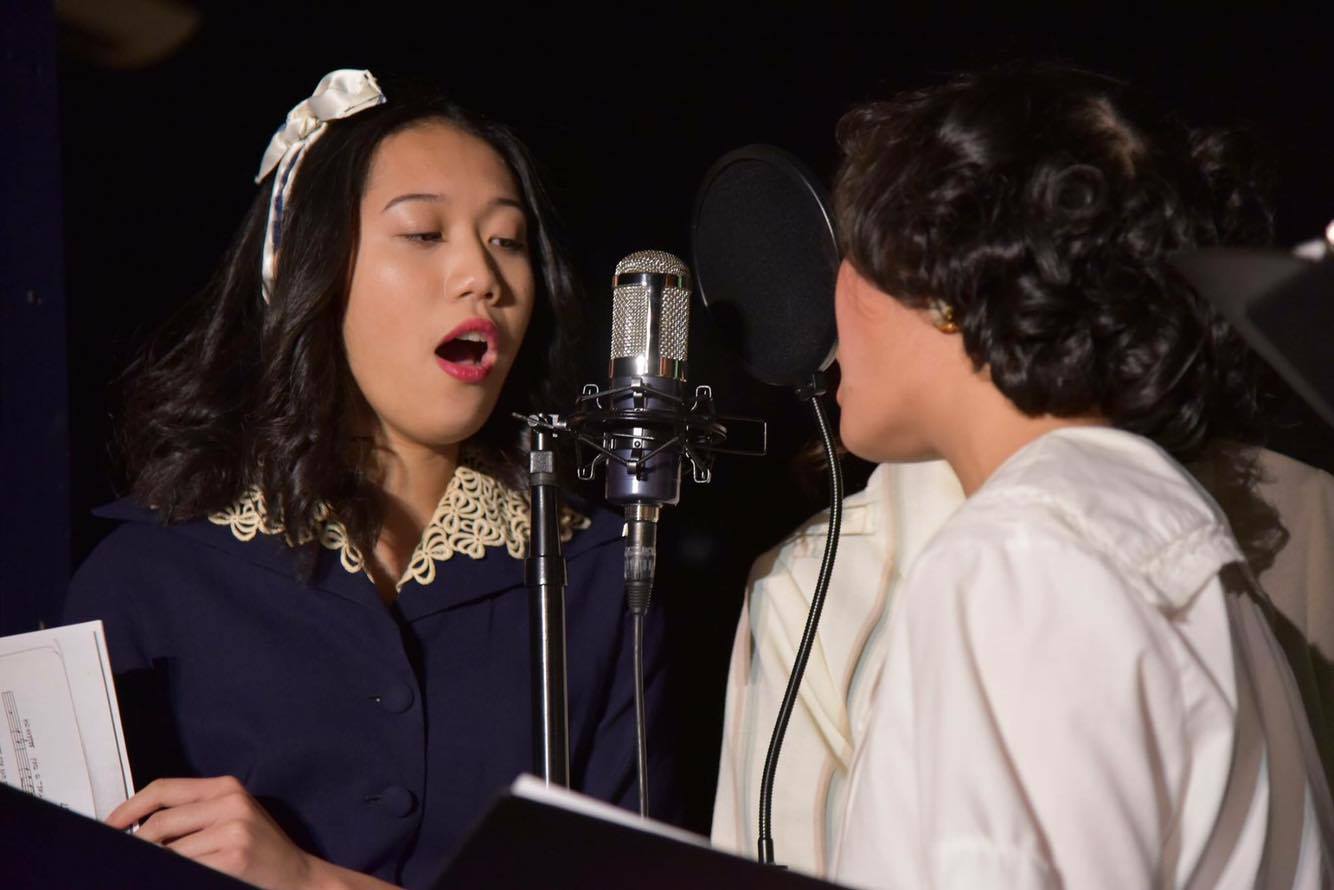
Junior Vanessa Estaniel and freshman Carolyn Nee speak their lines into classical microphone equipment during the show. Actors utilized equipment reminiscent of the old-fashioned radio show setting in which the story was supposed to take place, a unique experiences for many of the cast and crew members.
The drama department’s latest production, a radio show adaptation of Broadway rock musical Little Shop of Horrors, is rather unique in the way it incorporates members of the tech crew into the show itself.
In most productions, tech crew roles are strictly limited to behind the curtain, working on special effects, helping with set transitions and generally keeping the show running smoothly.
However, Little Shop of Horrors integrated the crew members as part of the cast, playing workers in the studio where the radio show is being recorded.
The crew members are fully visible all throughout the show, a large deviation from most shows where the crew remains largely backstage. Junior Patrick Brinza, head sound designer for Little Shop of Horrors, thought the integration of the crew members was beneficial toward the overall experience.
“It was nice because we were trying to demonstrate that we were doing a live radio show,” Brinza said. “And in a live radio show, we would have the studio, which we built and originally we had the sound board up front. But we tried to set it up so people could have the closest illusion of having an actual radio studio.”
The concept of a radio show setting allowed for an added layer of depth in the play based on the interactions of the actors when they weren’t performing. This innovation drew the audience in even further.
“I thought it was really cool how the people in the audience got to see not only the story of the show, but also the backstory of the people just talking and laughing backstage,” actress and sophomore Abby Greene said. “I thought it was like a double-bonus.”
The crew found that remaining on stage during the performance was decidedly easy for them.
“For me, I’ve also acted in two of our shows so it’s not that nerve-wracking,” Brinza said. “I knew people weren’t going to pay too much attention to me or be too worried about what I was doing.”
The incorporation of crew members into the performance also allowed for deeper integration and connection between the actors and the crew.
“I had a lot of fun because not only was I making sound effects, but we were also reacting with the people on stage,” Brinza said.
Fellow production members that started off as complete strangers found that they became close over the course of the production.
“I didn’t know any of them except for one person in the show and at the end of two weeks, I became so close to all of them,” Greene said. “I just couldn’t be more grateful to have gotten to know such an amazing cast and crew.”
For the actors themselves, the radio show setting allowed for unique performance experiences not found in other shows.
“It was really different,” Greene said. “I’ve never done a show like this before but it was so fun to have people with me. I could actually talk to my friends during the performance, which was crazy, but it made me so much less nervous so much more comfortable.”
The experience was also beneficial for crew members looking to learn more about the technical arts, such as foley artistry, which typically consists of working with sound effects found in live radio shows.
“Personally, I got to delve into more foley artistry which something I’ve been interested in for a while, so I finally got to actually explore that,” Brinza said.
The overall experience of Little Shop of Horrors was educational, unique and highly enjoyable for both the cast and the crew.
“It was just a lot of fun and that’s ultimately kind of the goal,” Brinza said.

